

Watchet - Washford - Blue Anchor - March 2025
| Watchet - Washford - Blue Anchor - March 2025 | |
| Thanks to Kate for providing us with this and many other circular walks in Somerset. Today's hike brought us from Watchet to Washford to Blue Anchor and back to Watchet. The hike was 13 km long and took 4.5 hours, although we had lunch for an hour and talked to several locals so the walk was only 3 hours and 5 minutes. It was slow walk also because there were some steep uphills particularly between Blue Anchor and Watchet. We climbed a total of 300 metres. | |
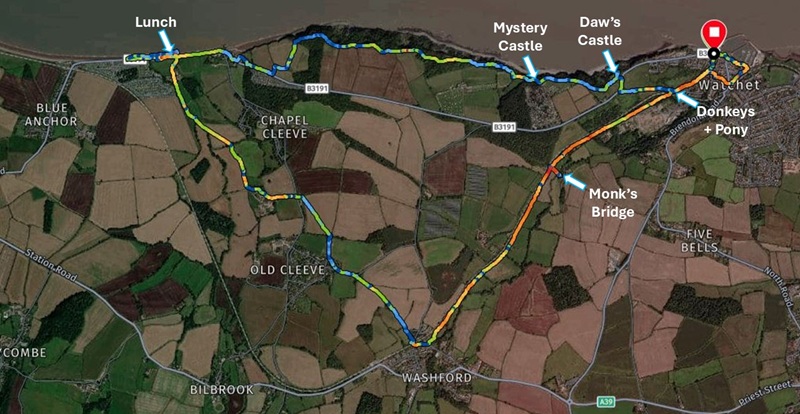
|
|
|
We knew nothing about the town of Watchet and we learnt lots during our visit. The drive there
went along narrow roads and the streets are even narrower. There are many interesting
buildings and lots of history.
Watchet Methodist Church was built in 1825 and expanded with a gallery in the mid 1800s. It was all too small so in 1872 they built the one we see today. | |
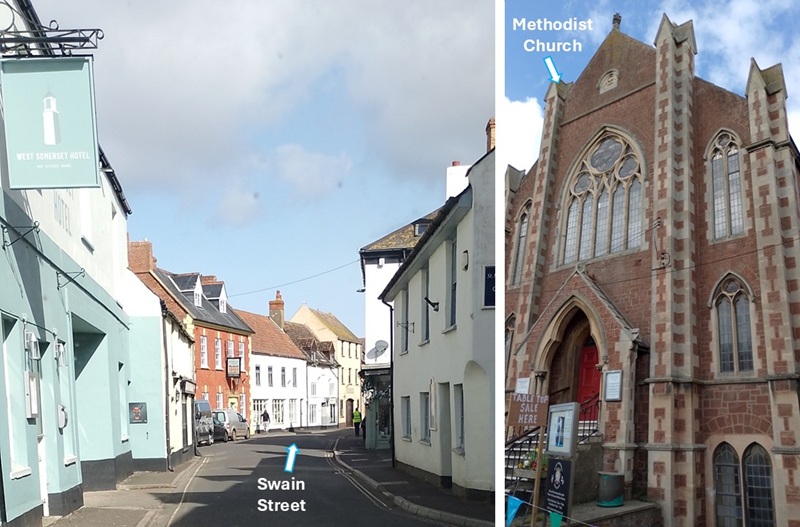
|
|
|
The harbour has many boats and flood gates keep the waterlevel even during low tide.
Martin tells us that many people who own boats and who live elsehwere keep their
boats here in the marina.
Overlooking the harbour are some fun-looking Pods at East Quay. One can rent these so maybe we'll do that one day! | |
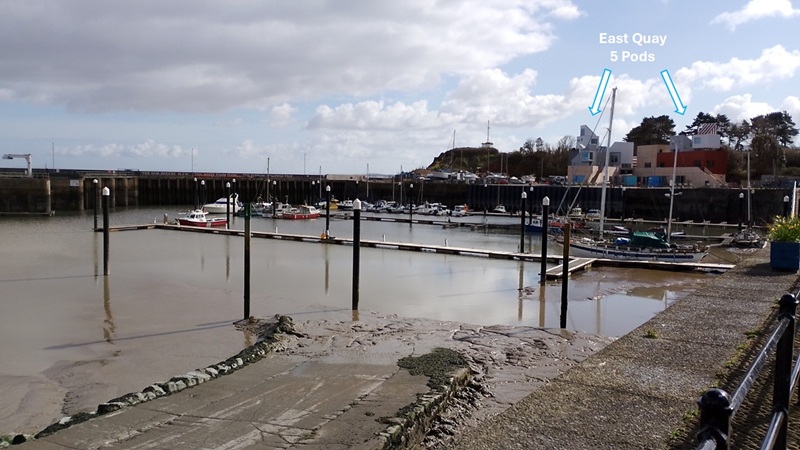
|
|
| We explored the harbour and Rob confirmed that it is very deep! | |
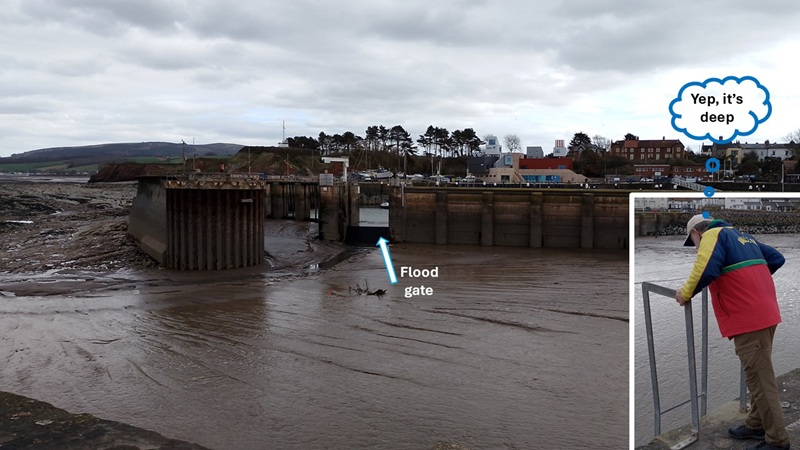
|
|
| Watchet harbour lighthouse is small (6.5 metres) but very red! It was built in 1862. A plaque told us that Princess Anne visited in 2012 for the lighthouse's 150th anniversary. | |
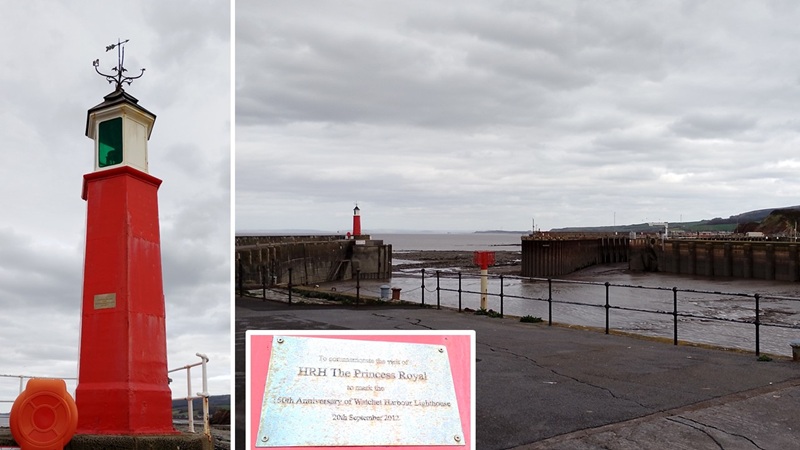
|
|
| Samuel Taylor Coleridge was visiting Watchet when he was inspired to write his famous poems: "The Rime of the Ancient Mariner". The story goes that a mariner is cursed after killing an albatross. His curse leads him to wander the earth telling everybody the story. It is Coleridge's longest poem, so I'm not including it here... | |
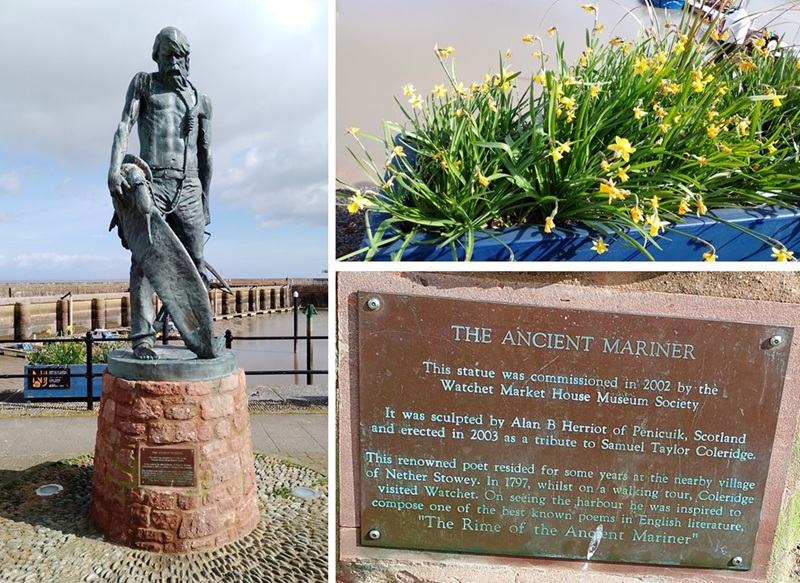
|
|
| We crossed Washford River several times as it winds its way through town. There were multiple weirs to slow down the water. Even the ducks had to paddle like mad to stay in one spot while ducking under water foraging for food. | |
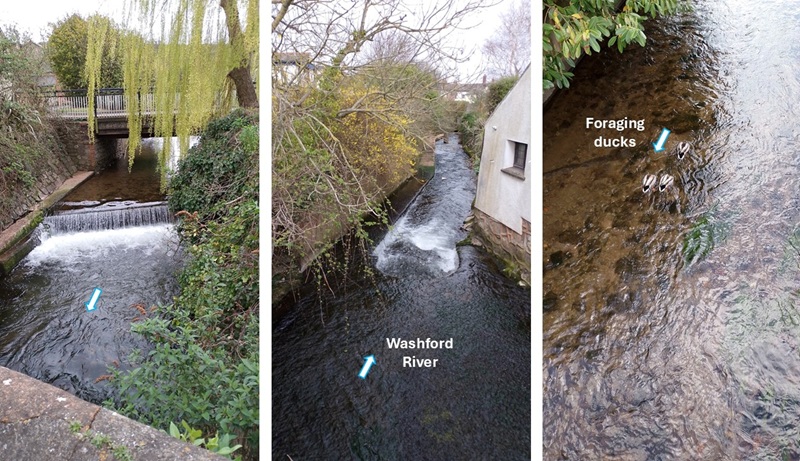
|
|
| As the river runs out into the sea we stopped to enjoy more historical buildings. These included an old mill, railway station used to tranport iron ore in the early 1900s, a public house (Sailors' Delight), and John Short's cottage. John Short (Yankee Jack) is known for being part of the blockade in the American Civil War and for his sea shanties. | |
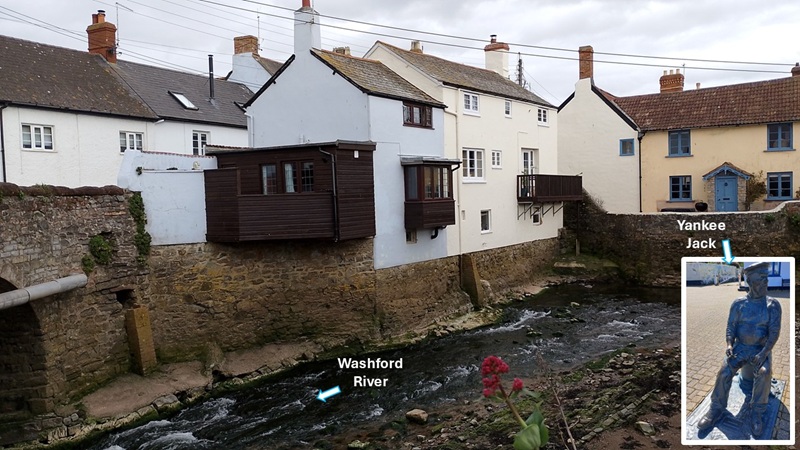
|
|
| The geology around Watchet is very interesting and there are lots of fossils to be found. There are two major faults. At one end it starts in the Triassic through Lower Lias back to Triassic. We did not stay to explore, so we will have to come back. | |
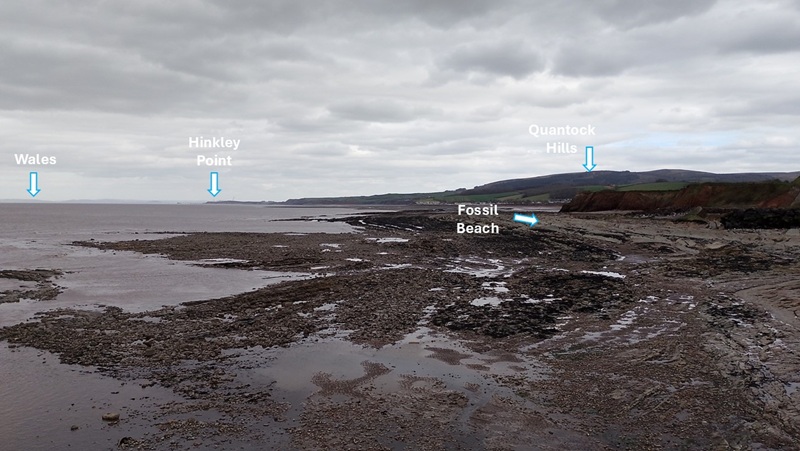
|
|
| We came across this large vortex turbine which was used to run Stoats Mill until 1927. It could do 200 RPM to power the mill works. Stoats Mill was built in 1832 and produced flour and bran from imported grain. | |

|
|
| From Watchet we hiked along the old West Somerset Mineral Railway line. It used to carr iron ore from the Brendon Hills to Watchet to be loaded onto ships. There was also a passenger service from 1865, but at one point the line is so stepp (1 in 4 incline!) that people were asked to walk up the hill due to the risk! The line was closed in 1898. | |
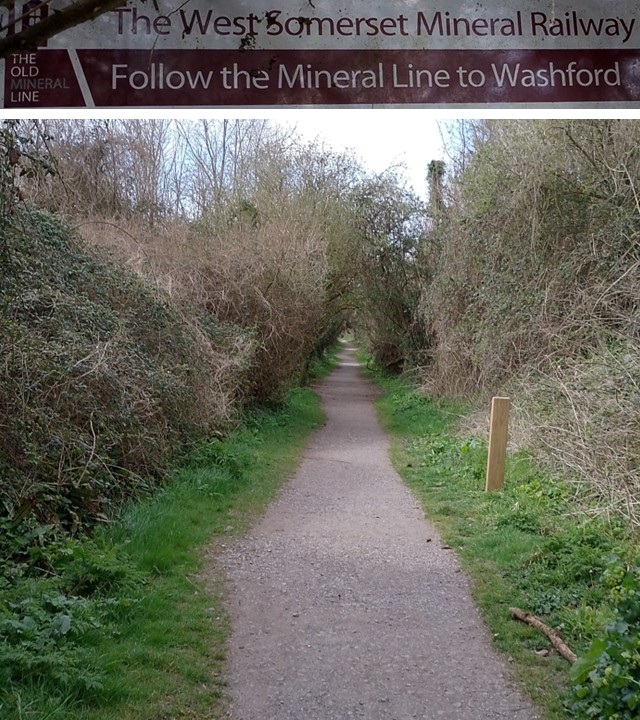
|
|
| We haven't completed our research, so we don't know what the derelict factory buildings were along our way. They make the area look very sad and unloved and unproductive. More information to follow one day... | |
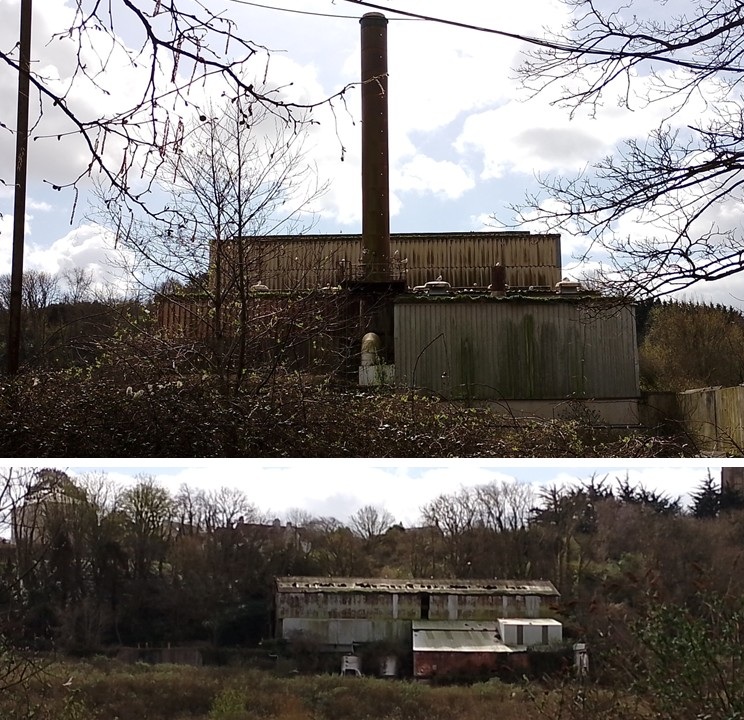
|
|
| On our way we spoke with a nice lady who used to be a warden for the hiking paths in the area. She first wanted to talk about our colourful and matching jackets. Our Valle-sports team jackets from the 1990s have started many conversations over the years. People feel compelled to ask us about them, which is excellent for us. The lady then gave us a lot of information on which paths to take and where to stop. One of the recommended stops was this bride across a pond and creek. In the olden days monks used to walk to the abby from here. There is still a cross set into the bridge where they used to stop and pray. | |
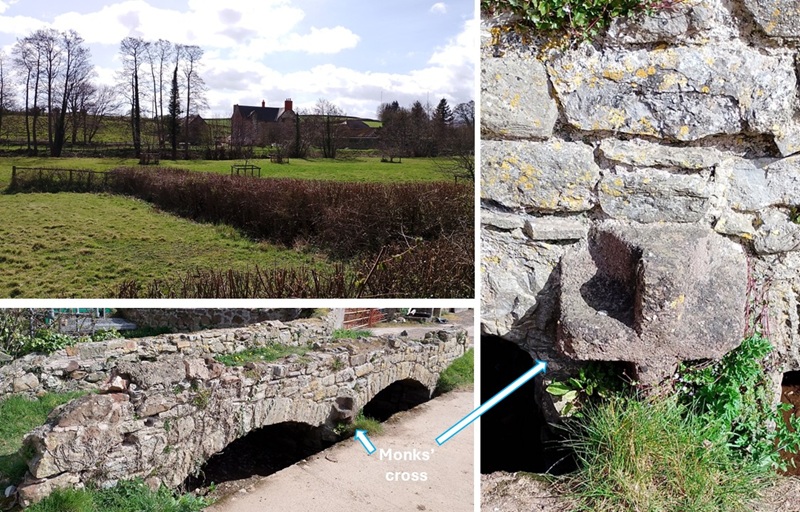
|
|
| At the same junction the lady had also suggested we cross the railway line and walk along Biddle's (?) Forest and other forest trails leading to Blue Anchor. It is a much shorter route than what we had planned. This was a hard decision because there were sheep on the other side of the track. We could have said hello to them. But we decided to take the long route through Washford. | |
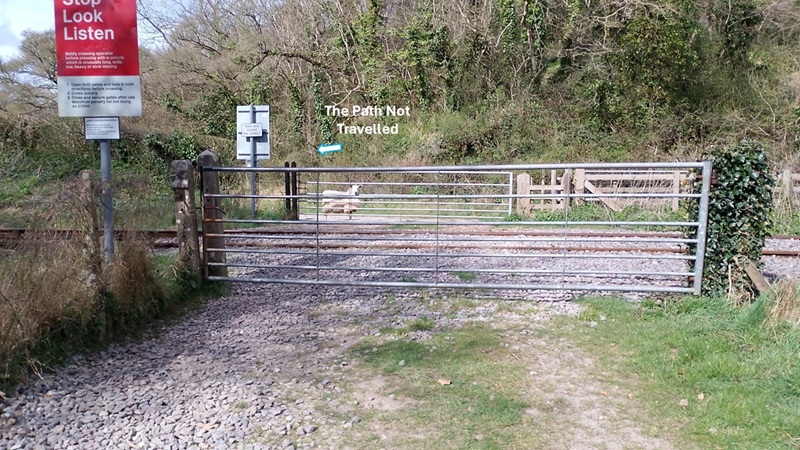
|
|
| Suddenly an old-fashioned train came along the line. We were caught off-guard and didn't get any good photos through the bushes and trees. | |
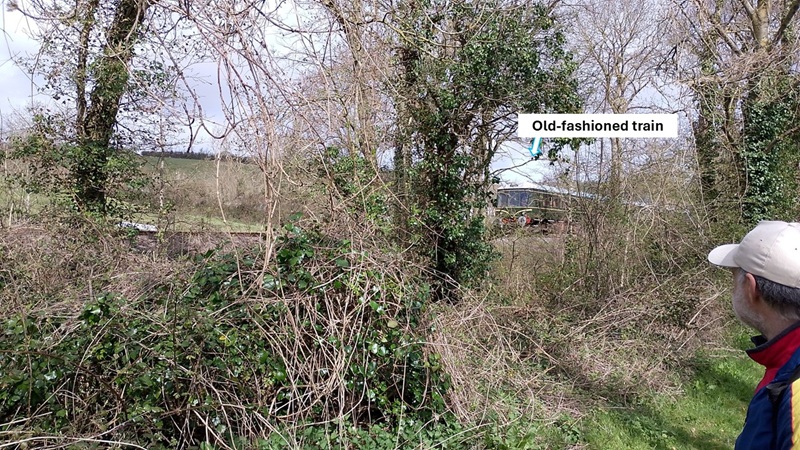
|
|
| We made it to Washford where we turned off the track along the railway. It looked like another quaint village, but we pushed on and didn't explore any further. We had to find a small track called the Monks' Path that should lead us to Blue Anchor. | |
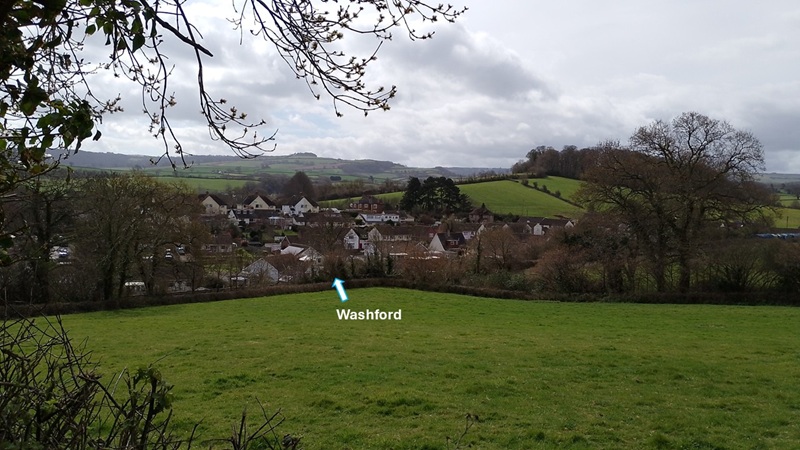
|
|
| The instructions on Kate's map told us in detail to turn right here and left there and under the railway bridge and then look for some steep stairs. Ah, Rob does love a set of stairs! | |

|
|
| Between Washford and Old Cleve, we hiked everything from very basic trails, to crossing fields, to more stairs, to dirt road with tarmac in the wheel tracks. | |
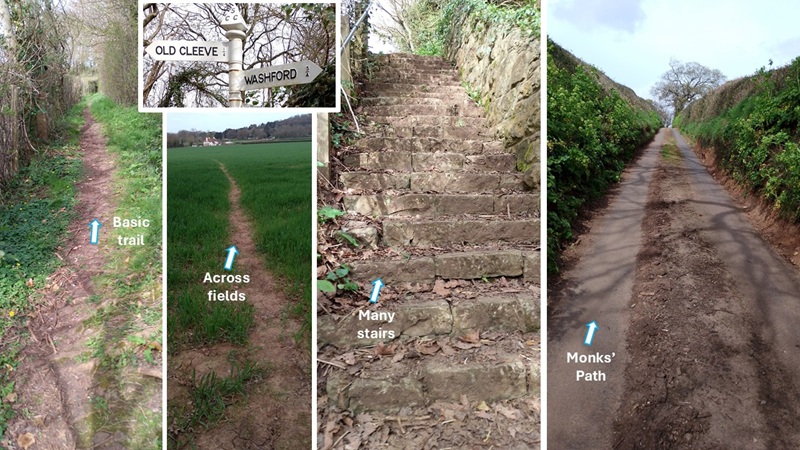
|
|
| One of our goals on the hike was St Andrew's Church in Old Cleeve dating back to the 12th century. Much of the church was rebuilt in 1425 and the tower was added in 1533. It was a beautiful sight and the graveyeard had lots of spring flowers growing around the graves. | |
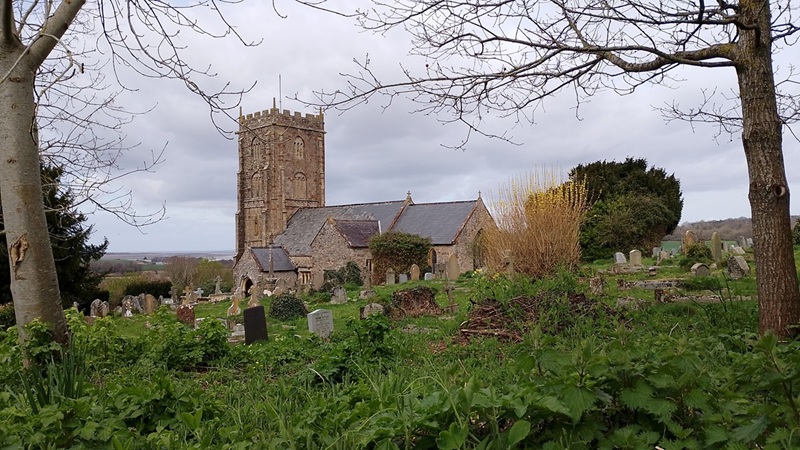
|
|
| The wooden entry door was big with large cast iron hinges. There were stone benches in the entry way. The windows were decorated with mfasks and little gargoyles, and we think the big waspnest was nature's own addition... | |

|
|
| As we were getting closer to Blue Anchor, we had to cross the property of Binham Grange. The main house and farm buildings were very old and also kept well and tidy. It is a 274 acre (110 hectare) dairy farm and this building was just the "Estate Office"! Last it was sold for GBP 3.5 million and had 260 dairy cows. | |
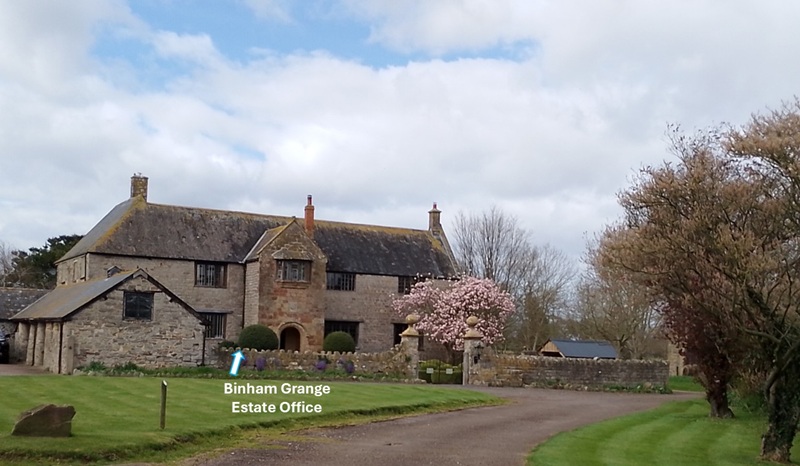
|
|
|
At the front gate Rob spotted old mounting blocks or horse blocks. People used these
to be able to mount the horses more easily. Very handy or very lazy?
The magnolia tree was in full bloom and very beautiful. | |
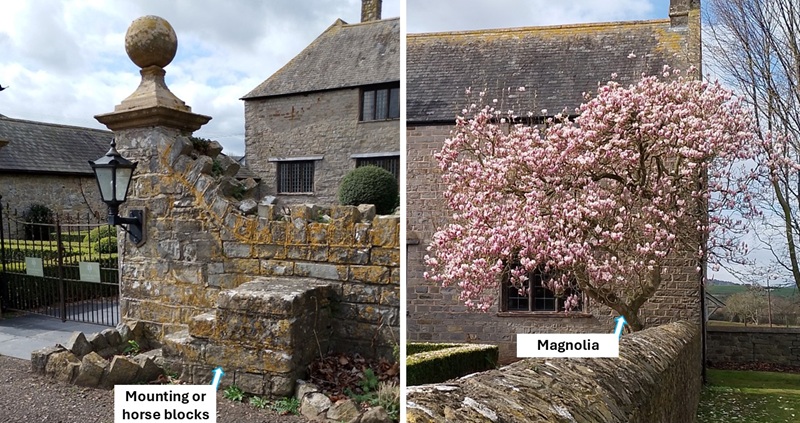
|
|
| As we left the farm grounds we had to cross a rickety wooden bridge. Rob felt compelled to check for trolls under the bridge - and look if the Billy Goats Gruff were nearby | |

|
|
| In the far distance we got a view of Chapel Cleeve Manor. It was built in the 1450s and used as a pilgrim's hotel. It was extended in the 19th and 20th centuries as private house and then a hotel. Currently it is privately owned. Back in the 15th century, the monks were going to and from Cleeve Abbey, south of Washford, as they were building a chapel on the coast. That chapel later fell into the sea. Erosion is and will always be a problem. | |
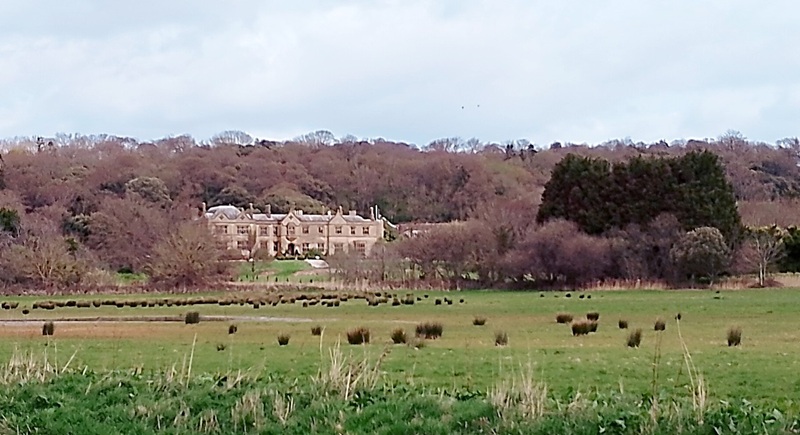
|
|
| When we got to the sea we of course did not find the chapel, but we did find The Smugglers Inn. Looked like a perfect place for lunch one day. However, we had packed our own lunch and headed for the beach instead. | |
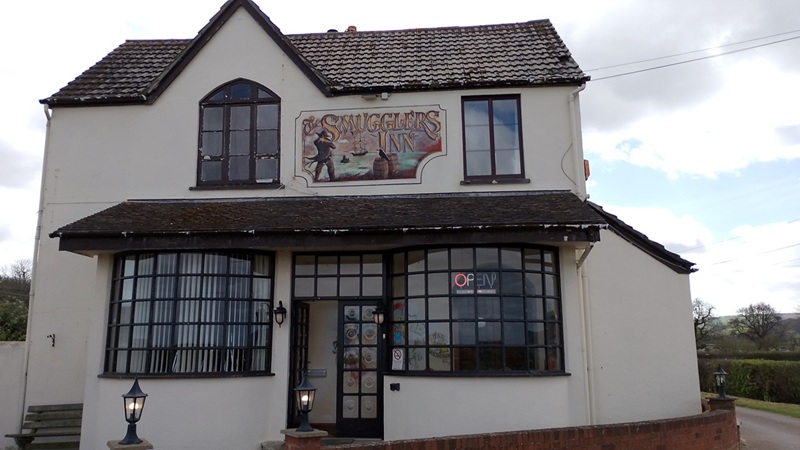
|
|
| It was a windy day so we huddled down behind large rocks, ate our lunch and snacks and made a cup of tea. Lovely! | |
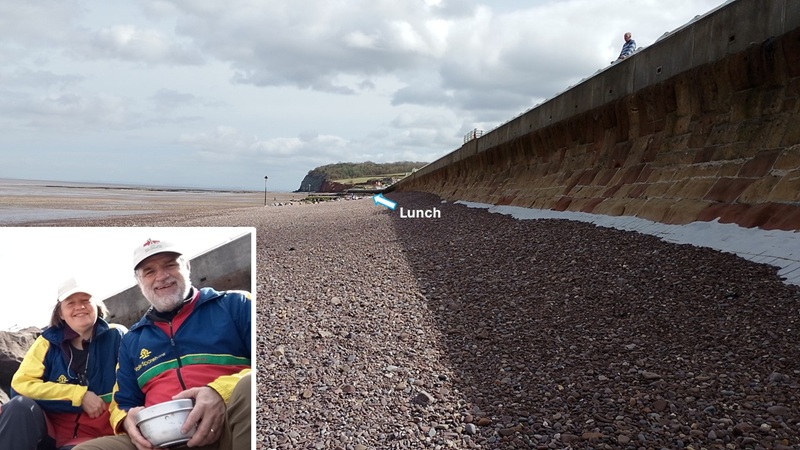
|
|
| From our lunch spot we could see across the bay to Minehead. Most visible is the tent roof of Butlins Splash Waterworld. It is shiny white and reminded us of Denver International Airport. A different size, but same effect! | |
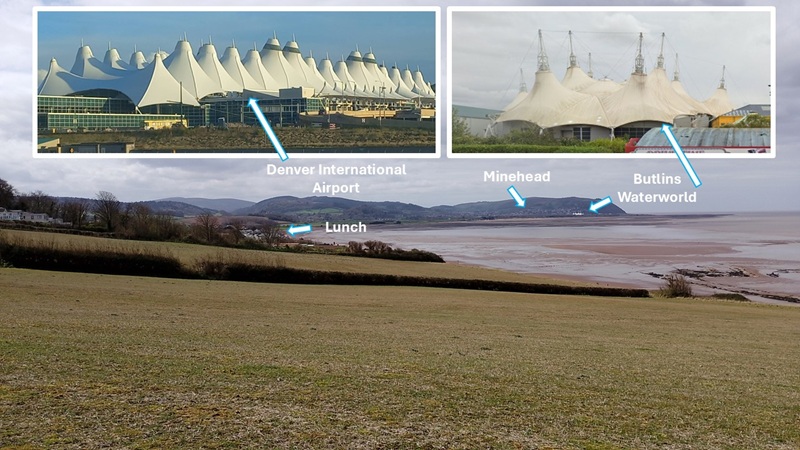
|
|
| The instructions for finding our way back to Watchet were slim, but we managed to find the various trail blazes and signs for England Coast Path. This was when the climbing up and down started. Good cardio exercise while enjoying the view of the sea and rocky beaches. | |
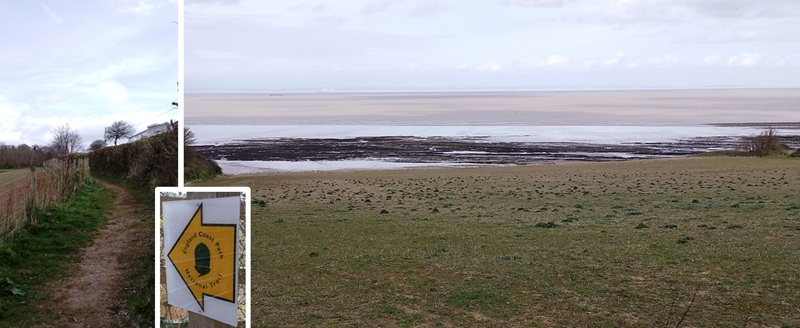
|
|
| Erosion is still with us, so several sections of the coastal path were closed and blocked off with signs about unstable cliffs. We weren't going to argue about that. The trails through the forest was nice and dry and we discussed what it must feel like for a tree to be covered in ivy. Is it ichy, we wonder?! | |
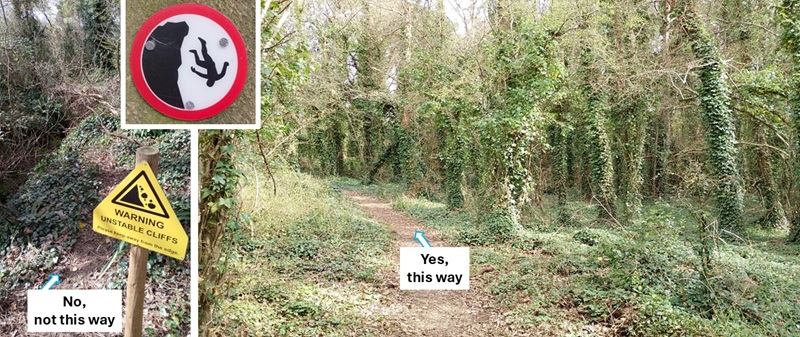
|
|
| Spring was in the air with a good temperature and many flowers. Most of all we got the spring feeling when spotting farmers' fields with already yellow rapeseed. | |
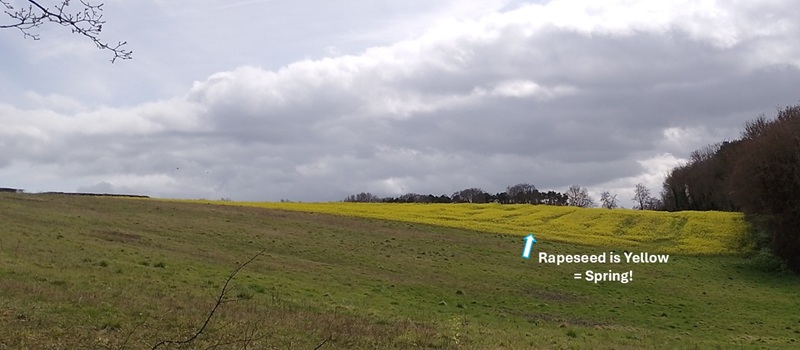
|
|
| Some of the flowers we spotted along our way included what Google thought were Alexanders or Horse Parsley. We know we saw a lot of primroses. Again, Google thought these white ones were Blackthorn. Who are we to argue?! | |
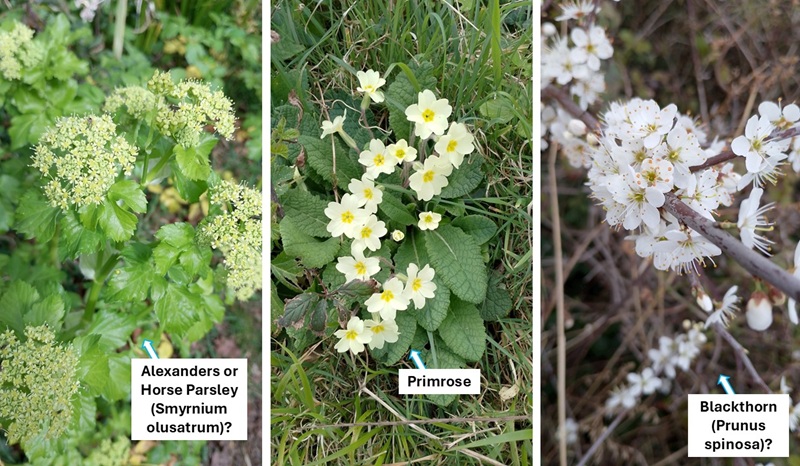
|
|
| We also spotted more of the interesting rock formations seen on Watchet beach. Presumably there are plenty of fossils here as well. | |
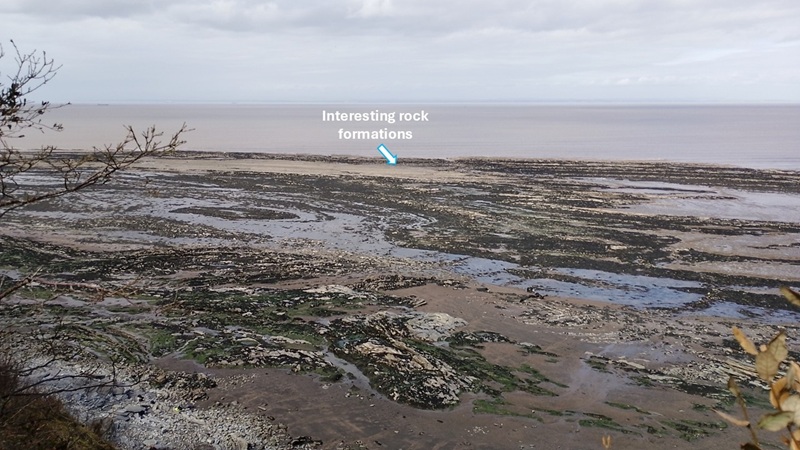
|
|
| All along the Somerset coast we find holiday villages such as this one: Warren Bay Holiday Village. It was fairly quiet today, but we expect it to get really busy really soon. | |

|
|
| Just before we climbed the hill up to Warren Bay we spotted ruins that first looked like a spooky castle. Some research has later told us that they were just derelict limekilns. Ah well. Still looked spooky. | |
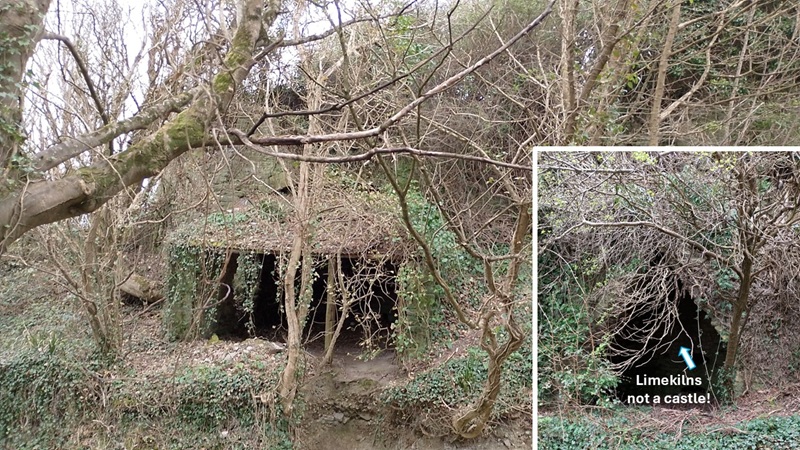
|
|
| Just after Warren Bay we found another derelict limekiln that sits on the site where there used to be "Daw's Castle". It was more a hill fort from the Iron Ages and fortified by alfred the Great (871-99). Watchet and this area were important and needed protecting because there was also a mint here at the time. | |
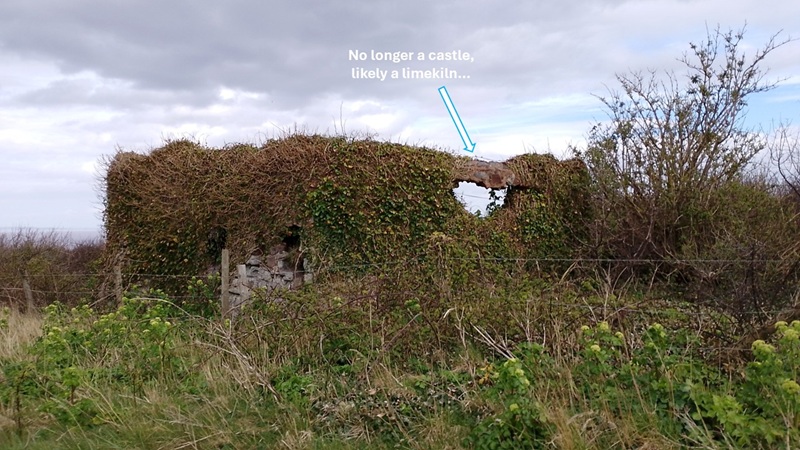

|
|
| At the start of our hike we had spotted some donkeys that we wanted to visit now on our return to Watchet. We found the right trail and said hi to a friendly Shetland Pony. The donkeys were also friendly, but one of them got a bit too friendly. He obvisouly figured out that Hild had apples in her backpack, but she was not willing to share. How rude! We managed to escape without injury, and the donkey looked very despondent when we left. | |
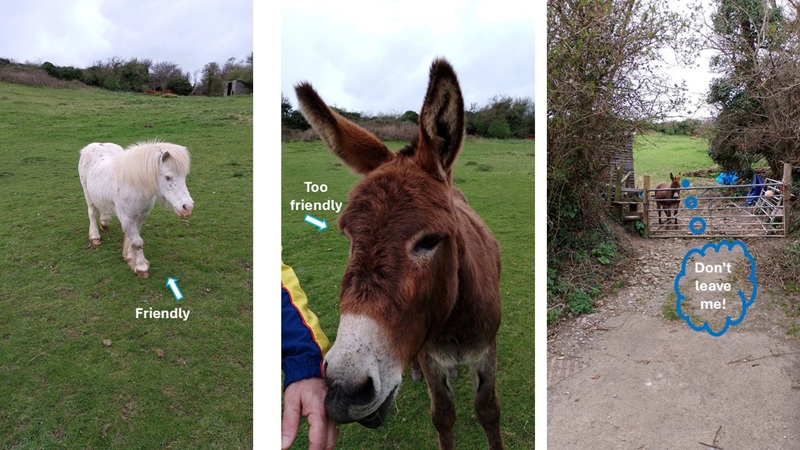
|
|
|
Some random things of fun things before we end the barrage of photos:
We learnt that some kissing gates are too small for a person with backpack to get through. So Rob had extra work to get through some gates. ... and there are always going to be more stairs! | |
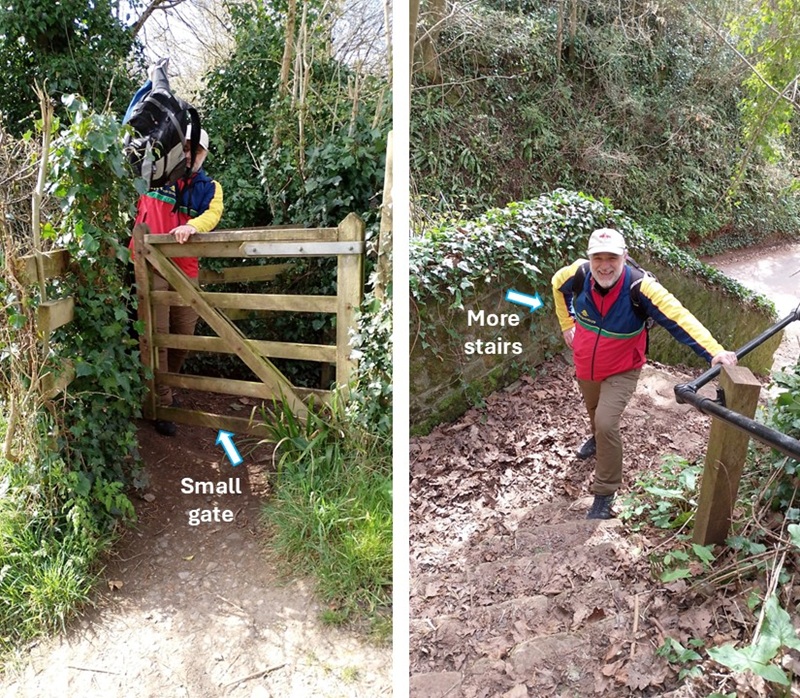
|
|
| This car dashboard was chock full of different rubber ducks... Interesting and cute! | |

|
|
| We don't know what these figures signify, but they were all cute and placed all over town. The look to be made of bits of old cars. | |

|
|
| At Old Cleeve Pre-School in Washford we spotted this nice fence of giant colouring pencils. | |

|
|
|
In Old Cleeve someone had not just posted that one should pick up after the dog, but
they also provided bags to do so!
Along Monks' Path we looked and looked for Clyden's Cross, but we're not sure if this was it. On the beach in Blue Anchor we found this dead thing. According to Google it is a small-spotted catshark also known as a sandy dogfish. | |
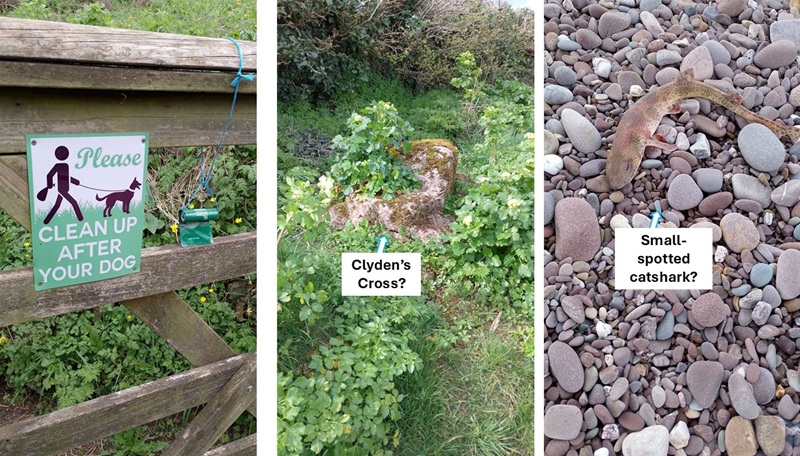
|
|
| It had been another fantastic hike in Somerset. So many surprises to be found. We'll do some more! | |

|
|
|
Postscript: A perfect day for hiking boots - no wellies required. |
Mar 2025

